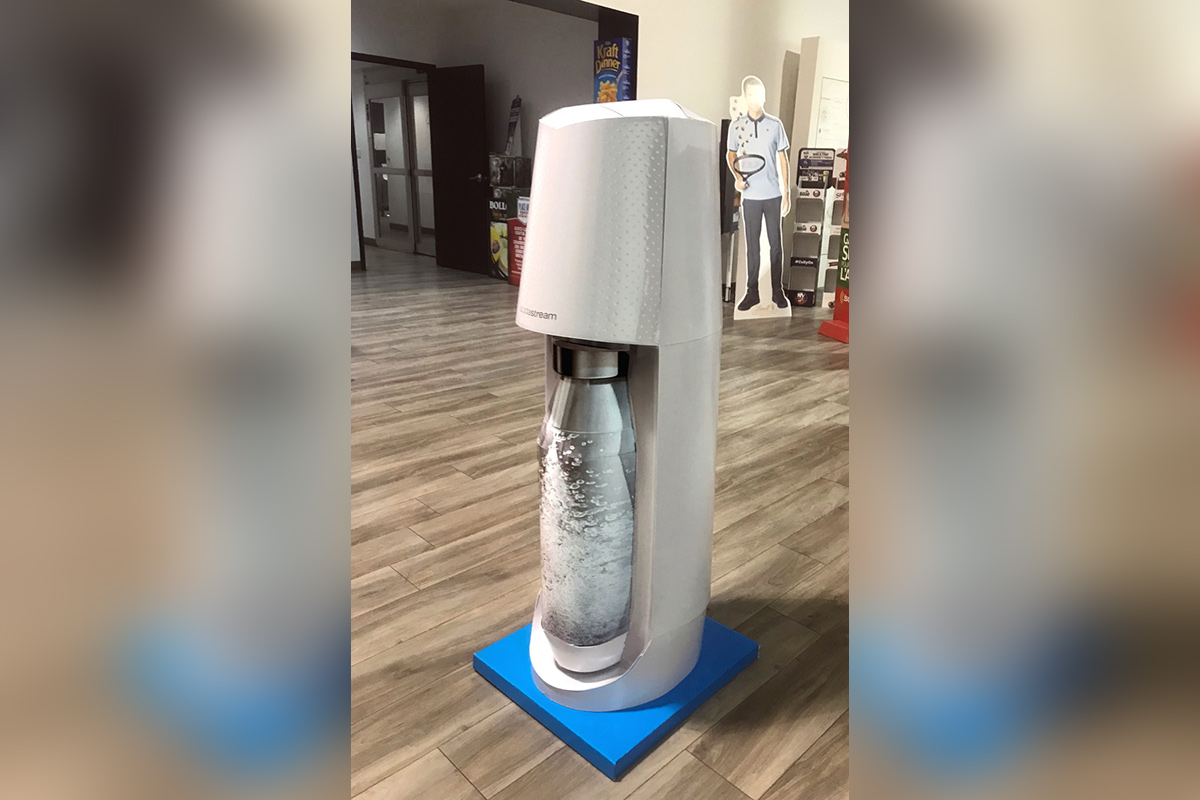The PanaWrap global licensing programme is bubbling up very nicely for its developer. So should you be drinking from that fountain?
Under six months ago StackaWraps launched an international licensing programme for its novel, and patent-pending, PanaWrap 3D print offering. Since then 19 licenses have been taken out - six in the UK, five in mainland Europe, five in the USA, one in Canada, one in Japan and one in Australia. The company says there are many more in the pipeline, including one huge international leading print and packaging company with a long-established global manufacturing network that will see PanaWrapping proliferating in the print marketing industry on a colossal scale in 2020.
“We are doubling up our creative capacity for this year’s influx of new global partners. I can’t say too much at this time, but we are ecstatic to be making alliances with some of the biggest international players in the game,” enthuses commercial director for PanaWrapping International, Richard Horne.
So what’s the big attraction for PSPs in joining the ranks of global partners for what is certainly an eye-catching 3D product? First, you need to understand what PanaWrapping is – a technique developed to convert 2D images into curved three-dimensional products, of any size, without stretch or distortion of the original image. Thus you can replicate a 6ft photorealistic soda stream bottle for instance - exactly what the first Canadian partner has done. It is now in direct talks with Soda Stream to roll out similar campaigns globally. In the US, the first order to use PanaWrapping was a high-profile Super Bowl campaign for Pepsi. Now live in over 2000 Walmart outlets, and with additional high-profile orders in production, StackaWraps says PanaWrapping will bring in over $1m in revenue via its US debut.
This 3D alternative to traditional special builds is manufactured using recycled and recyclable material and shipped out flat-packed for the lowest possible carbon footprint, a real point of attraction to brands toeing the environmental line.
PanaWrap partner PSPs must have good sustainability credentials and be able to supply high resolution flat art files compatible with the specialist software developed for this unique 3D technique. How the process works is that flat art files are converted by the PanaWrap team into a series of panels incorporating a lock and tab system called the Master Files. These files are sent back to the PSP ‘ready-to-go’ and printed onto sustainable cardstock, then cut out using CNC or die cutting equipment. The cut panels fold neatly together to create a push-out model - using an inter-locking tab system that secures the panels in place to create a 3D product replica from a flat-packed, sustainable card display.
The models can be made to virtually any size - PSPs/clients just size the Master Files and select the preferred scaling per application. Further copies can then be produced under license to PanaWraps.
“Our business model is simple. We charge partner PSPs a subsidised cost for producing the Master Files, followed by a sliding scale commission when the order goes live. Imagine, instead of presenting a flat printed display, like your competition, add photorealistic, 3D PanaWrapping, and increase your profit margins by literally adding a sheet of sustainable card stock,” says Horne.
“We are so excited about 2020,” says Natasha Leigh, CO of PanaWraps’ and co-founder of parent company StackaWraps. “International licensing enables us to evolve our PanaWrapping system globally and will help keep our print innovations above the competition in 3D for efficiency, sustainability and high impact branding.
“Sustainability has been the driver of this latest development by our team and we are so proud to be able to contribute to anything that can help improve the print industry’s green credentials and reduce carbon footprints. This is something we are continuing to work on with our global partners.”


